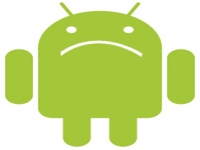
Stop me if you've heard this one before: Google is embarking on a program to promote the pure Google Android experience on devices from a variety of manufacturers. Carrier and manufacturer crapware will be prohibited, or at least reduced and removable. No custom UIs are allowed -- just Android as Google intended it to be. Or so report The Information and others, in a story about "Android Silver" that seems credible or, at minimum, a typical Google move.
The problem is that hardly anyone wants that pure Google experience. Google has tried three times already, but people don't buy them: The Google Nexus series came first, then Google's purchase of Motorola Mobility, and more recently the Google Play editions of Android devices from LG and others. Google will try again, under a new name and with serious money thrown at hardware makers who play ball. Many will sign up for the free money, but don't expect a different result this time.If Google really wants to make everyone use pure Android, it needs a different approach (which I'll describe later). The basic problem with Google's attempts so far -- and with the reported Android Silver effort -- is that the pure Android experience isn't that special. To quote Barenaked Ladies' song "Aluminum": "You can shine like silver all you want. But you're just aluminum."
Don't get me wrong: The Android UI has been solid for a few versions now. But the variations from Samsung and HTC are also good and -- more important -- cause no harm to Android. The truth is that these are mainly skin jobs, not major departures from the Android UI in the same way as the Amazon.com Kindle Fire fork.
Google's three failed attempts to assert its pure Android
In the early days of Android, HTC and pre-acquisition Motorola Mobility were making their versions of Android not only look different but work different than Google's Android standard. App compatibility was a major threat to the platform, causing developers to hang back. Remember, in the 2008-to-2011 period, there was no dominant Android maker as there is today (Samsung). Even the leader of the time, HTC, was nowhere near a majority of sales. The dangers of a fractured ecosystem that would inhibit developers and service providers -- not to mention confuse buyers -- were real and pressing.
That's why Google came out with its Nexus One in 2010, a "reference" design meant to show Android makers a better way. Google's management at the time thought all it had to do was provide a model, and the industry would see the error of its ways and coalesce around the Google model. Instead, no one bought the Nexus One, and Google fumbled the ball with a series of flaws and nonexistent customer service. It was killed months after its release.
Google did a little better with Android 4.0's Ice Cream Sandwich release in 2011, when Google limited the availability to pure Android devices for several months, in an attempt to seed the market with its vision of Android. I believe that's why Android tablets are less different from each other than Android smartphones. But the best-selling Android tablets -- Samsung's -- use Samsung's UI and add-on apps, not the pure Android experience. What does that tell you?
Android makers continued to do what made business sense: Create Android variations they could use to show why someone should buy their version rather than someone else's. After all, if all Android devices are the same, except for hardware trim, how can anyone stand out? The Android makers didn't want to become PC makers, selling essentially the same product as their competitors.
Android makers, though, understood the issue of fragmented versions inhibiting app and service sales -- more from developer reaction, I believe, than from Google's finger-wagging -- and have since been much more careful about how they implement differences in Android, to minimize compatibility issues. Compatibility issues still exist, but they're not as severe as before, and most are about whether an app uses a special feature available only from one device maker -- Samsung, in most cases.
Google, however, really wanted Android makers to make the pure Android version, so it bought Motorola Mobility as a not-so-subtle threat that it would compete with errant Android device makers if need be. But Google's management almost immediately eviscerated Motorola to the point where it was no threat to anyone.
Google even partnered with its (Motorola's) own competitors to create Nexus devices that also ran pure Android, guaranteeing that Google-controlled Motorola couldn't stand out from the hardware makers whose primary Android devices were not pure Google goods. I can see the execs at LG and Samsung marveling at how Google would pay them to compete against Google's Motorola while giving them free rein to continue with their custom Android devices. They did -- and the impure Android devices are what people actually bought.
The industry learned quickly that Google didn't mean what it said. The Nexus One wasn't a serious effort. Google's attempts to favor pure Android were half-hearted and temporary. Its Motorola move was simply inane, a waste of billions of dollars and, more critically, the impetus for Samsung cementing its "we're not Google's face" strategy. The Google Play Edition devices made by LG and others are mere fig leafs -- their sales don't even register in market surveys. And now, Android Silver appears to be essentially a rebranding of the Google Play Edition strategy and will be no more successful.

